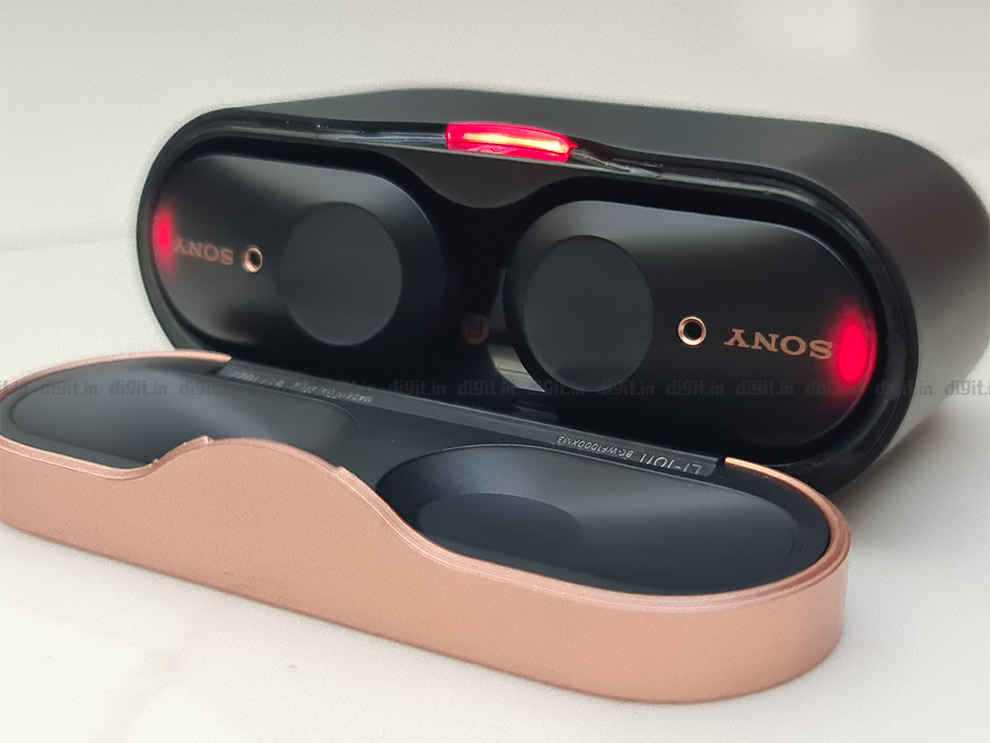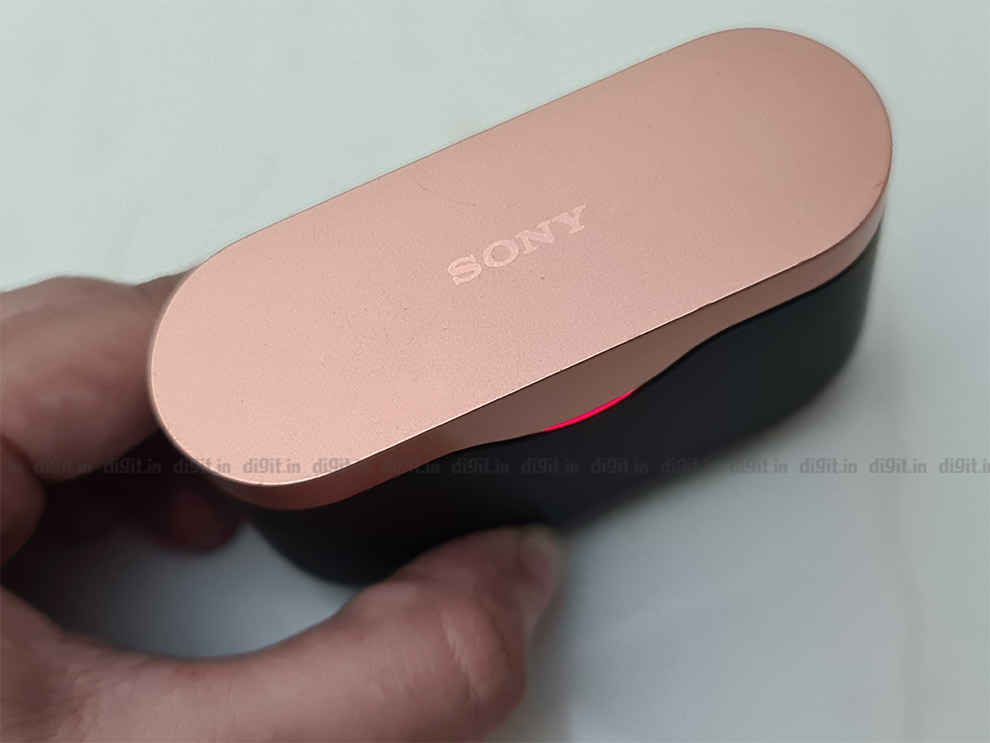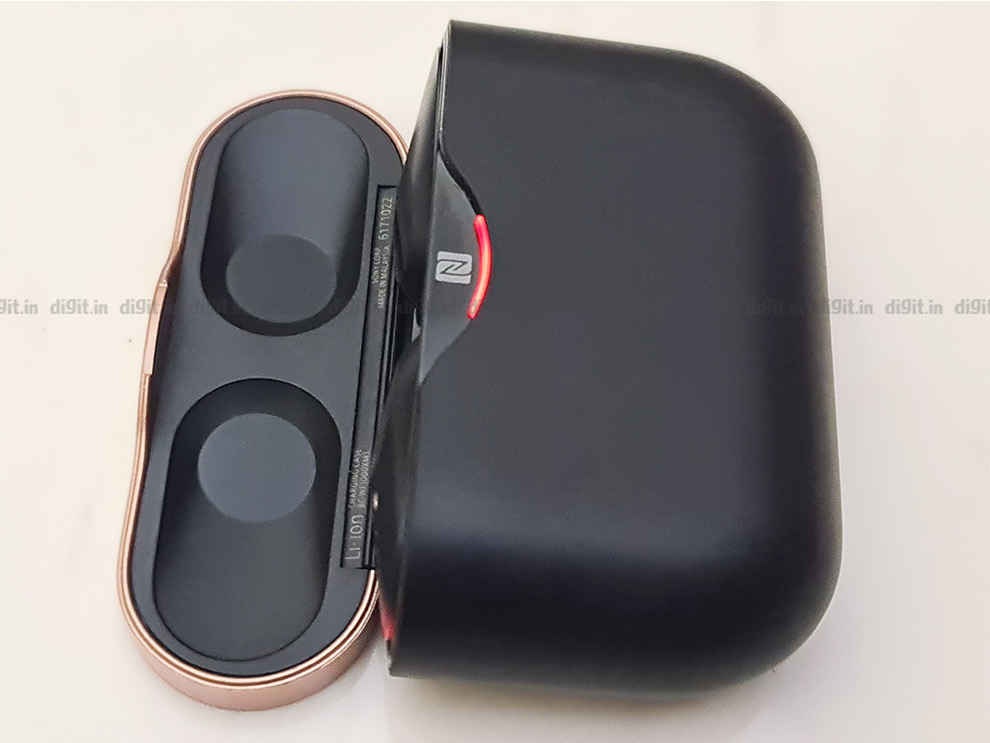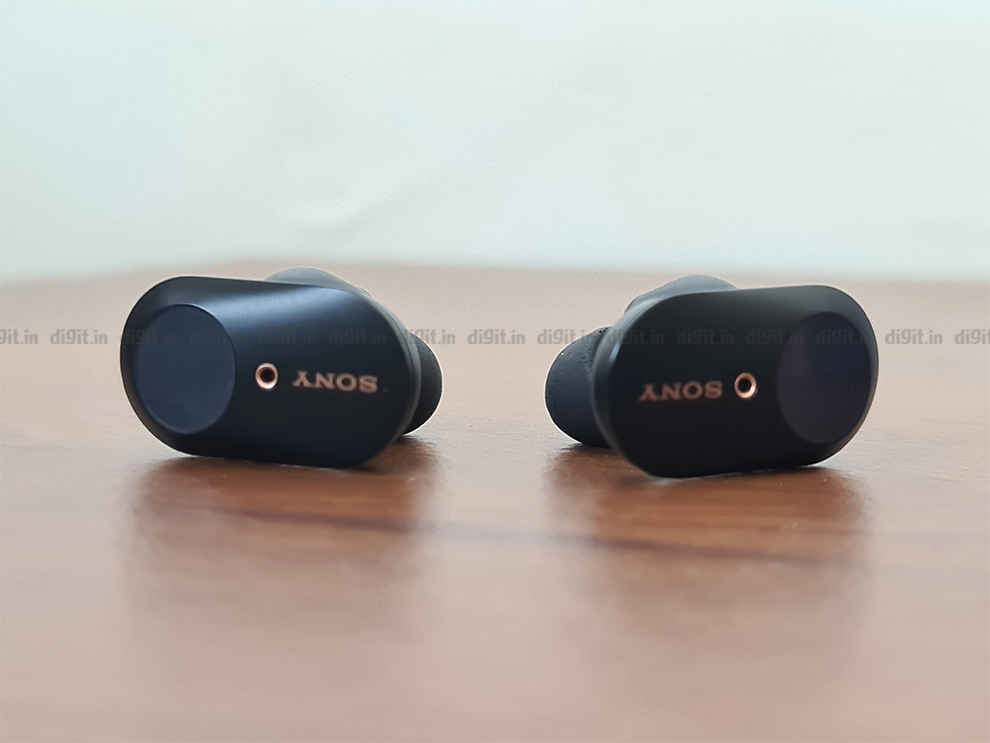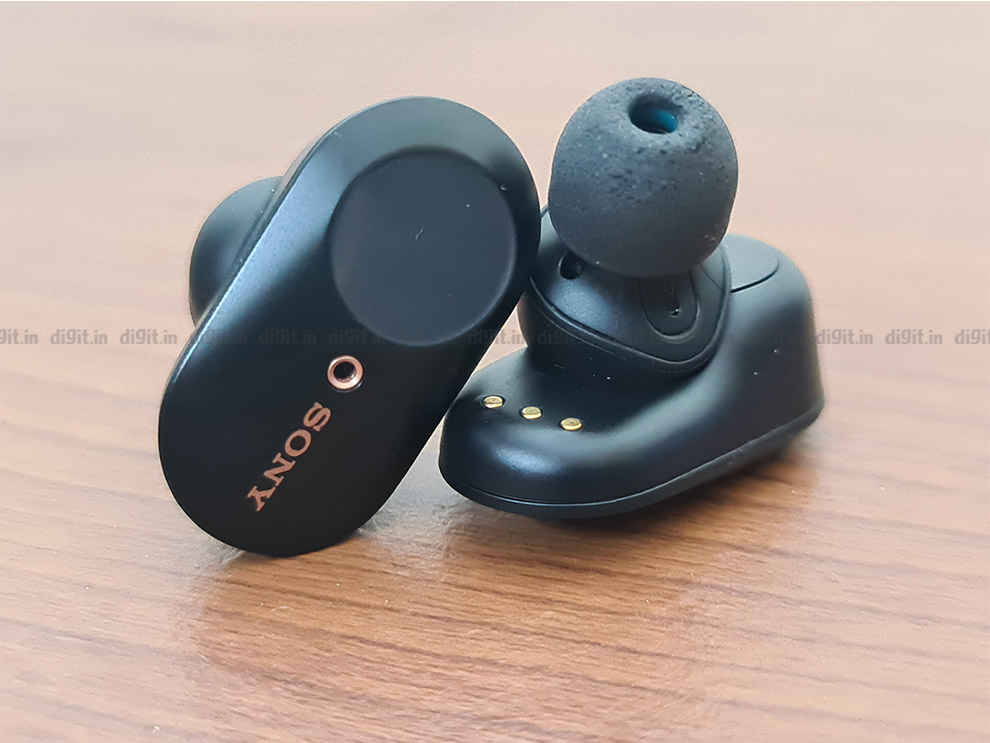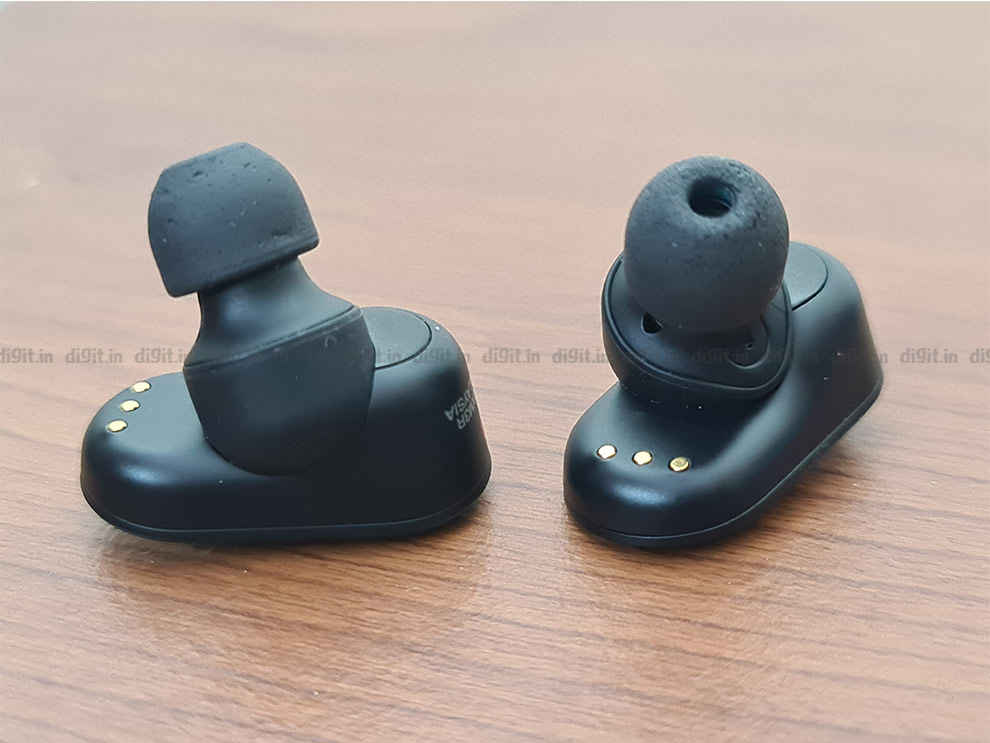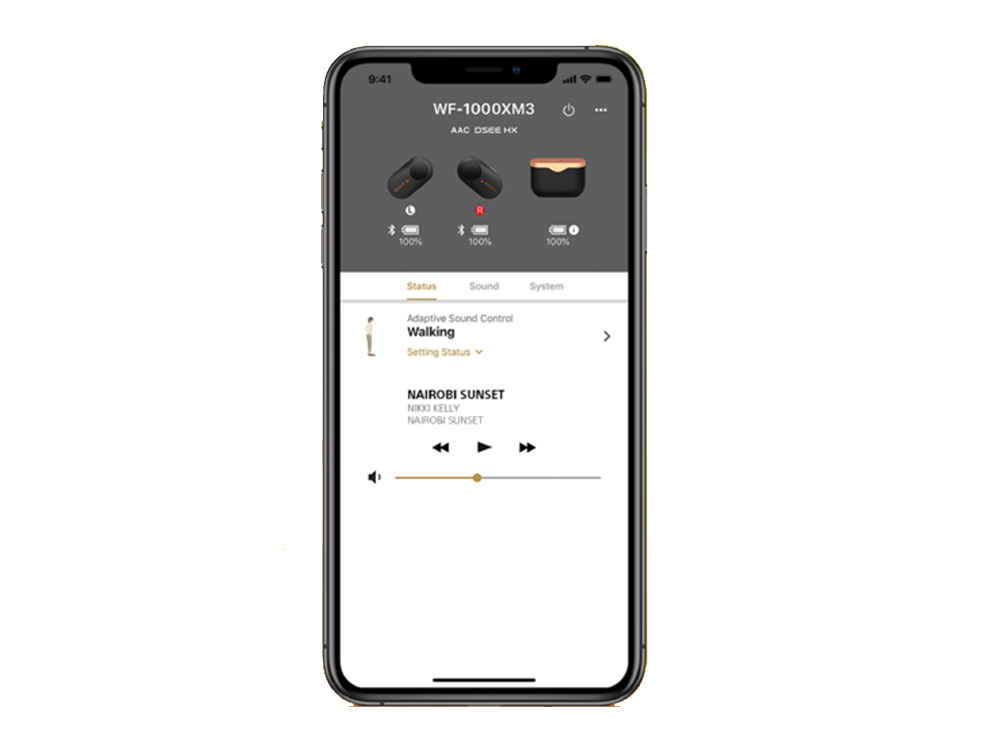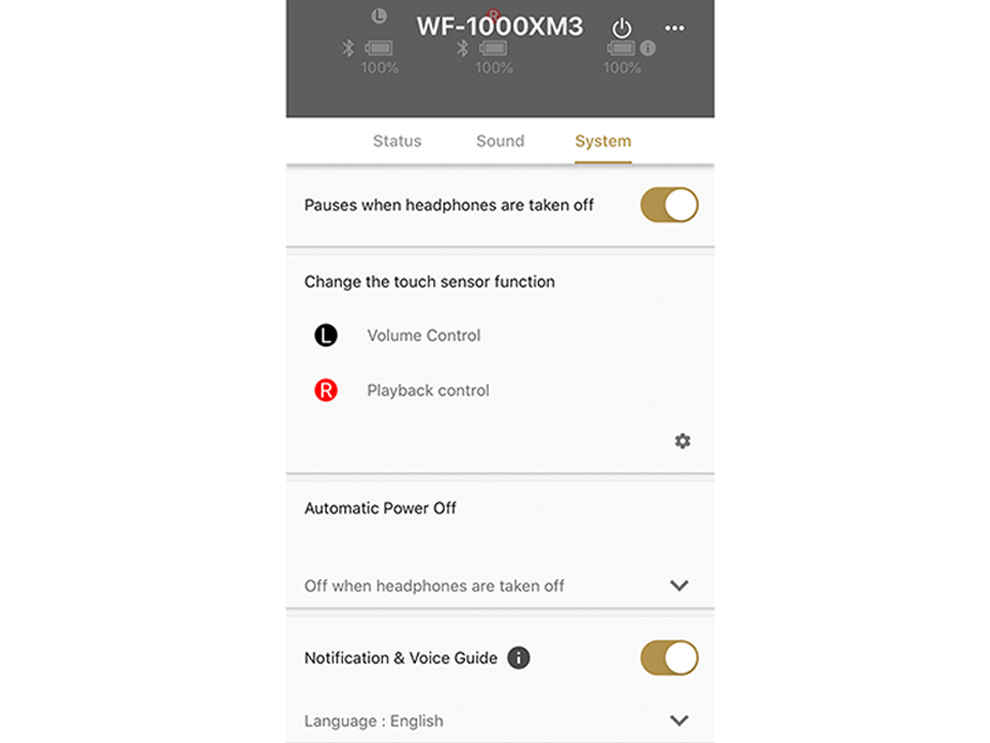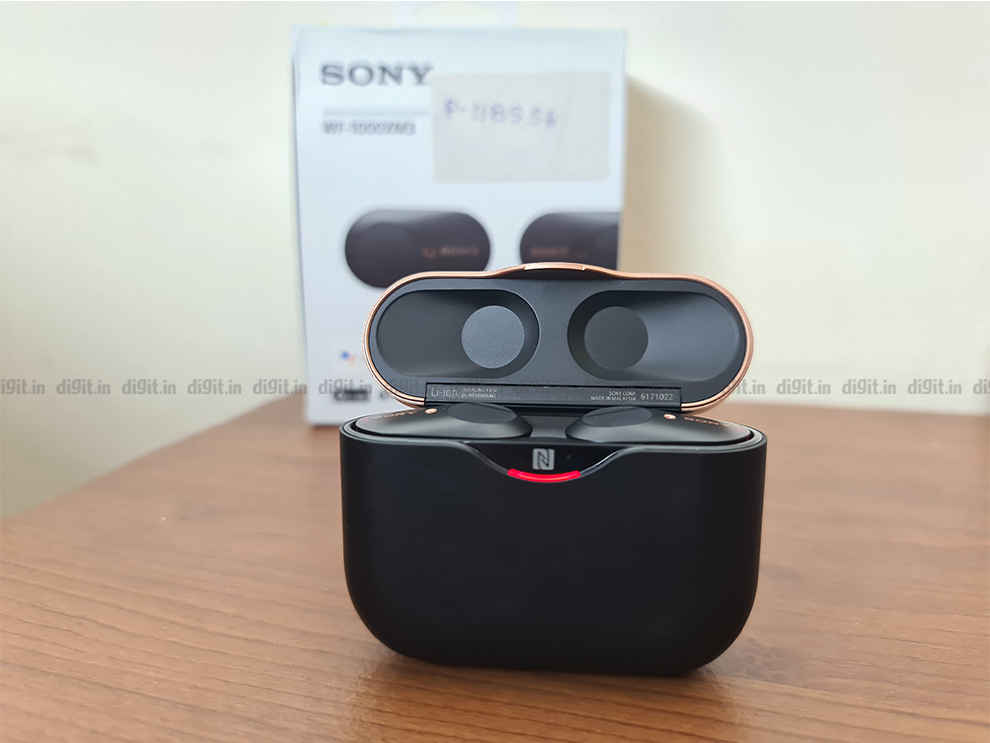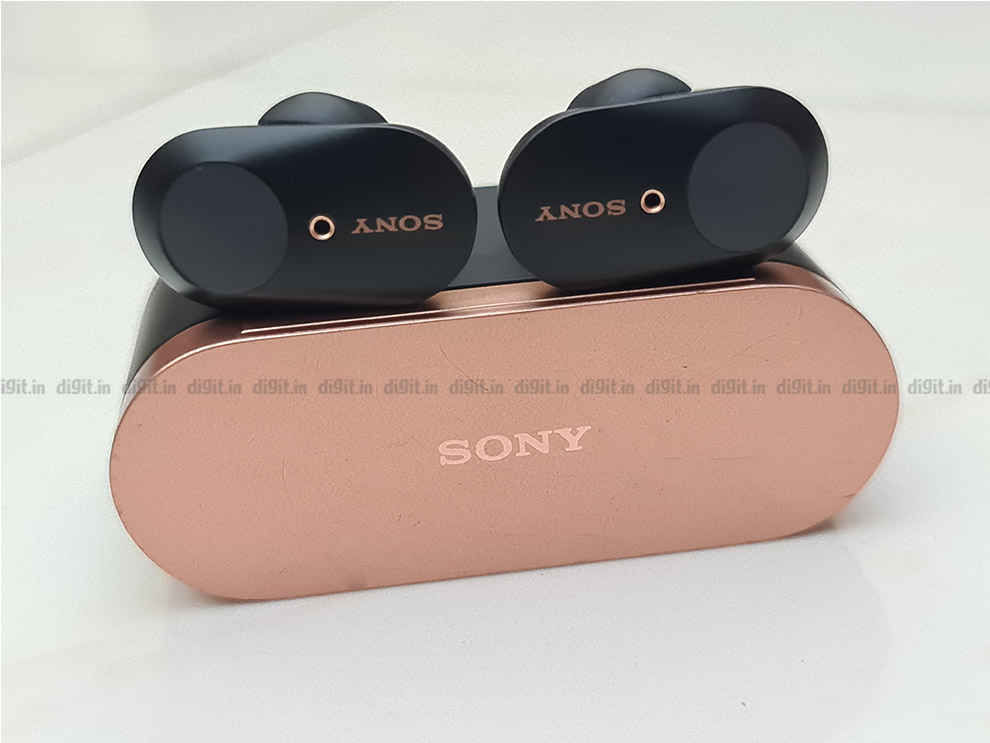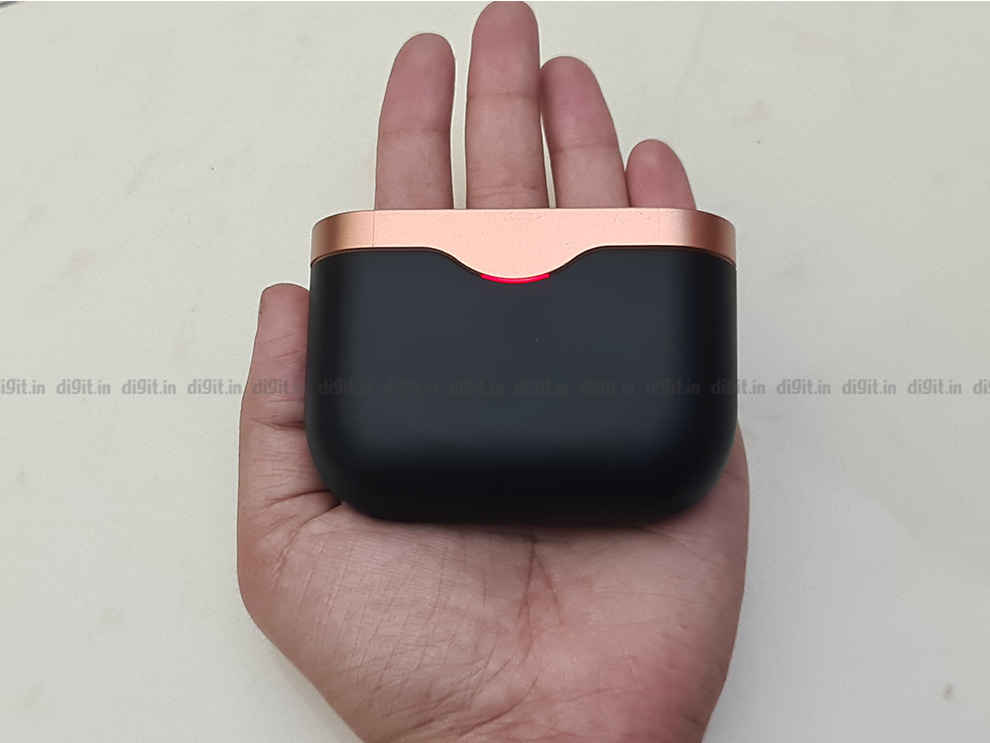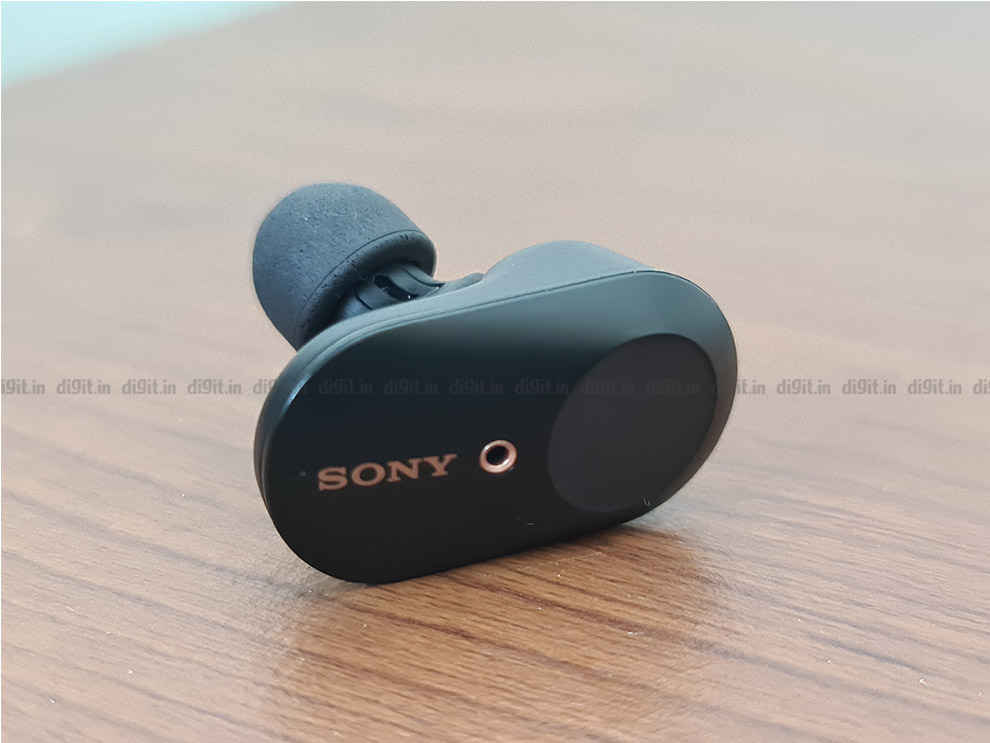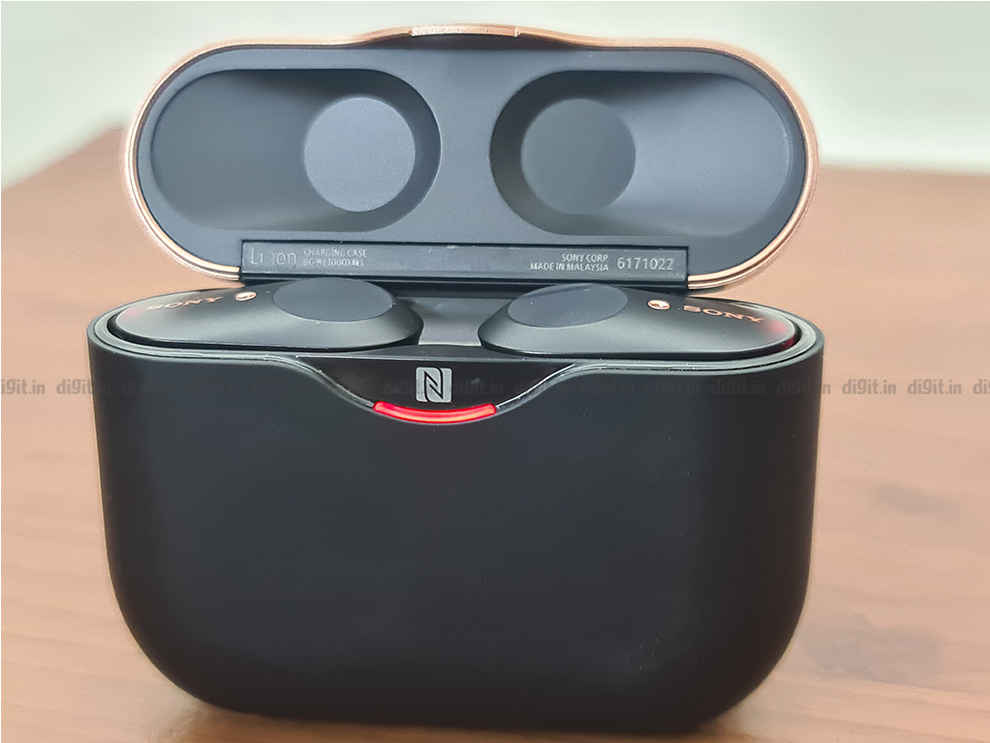Sony WF-1000XM3 Wireless Noise-Cancelling headphones Review : The best noise-cancelling truly wireless earbuds out there
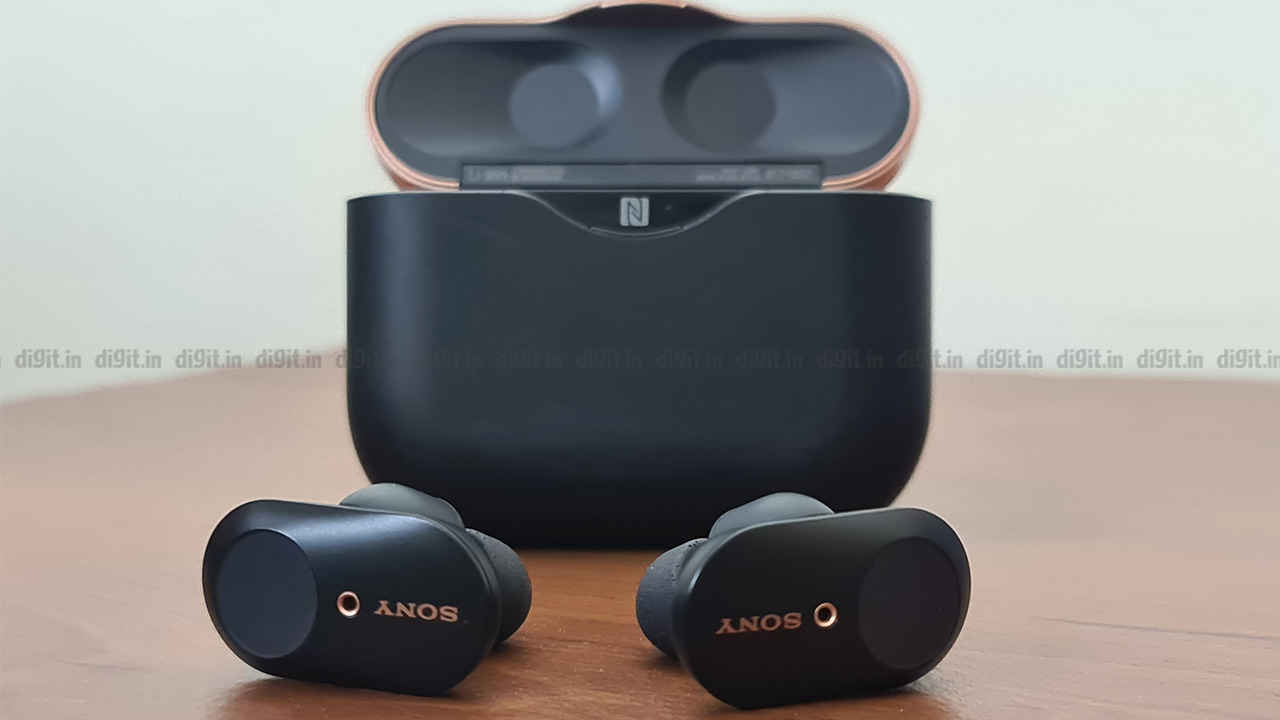
There’s not much to criticise with the Sony WF-1000XM3 since you get solid sound quality, exceptional ANC for in-ears, long battery life and a host of premium features. The only features we sorely missed were wireless charging for the case, an IP rating and aptX support. The earphones are also comfortable for most ears and can be worn for long periods without overbearing fatigue. Additionally, Sony has priced these pretty competitively in the premium true wireless segment, undercutting the AirPods Pro and Sennheiser True Momentum Wireless 2 that offer similar features. Therefore, if you are looking for a premium pair of earphones that can envelop you in an auditory bubble and immerse you with great features, the Sony WF-1000XM3 are exceptional earphones to consider, especially since they are priced under 20K. However, if you’re looking for an IP rating and something more fitness-oriented, you could consider the Sony WF-SP800N instead.
The crown jewel of Sony’s true wireless lineup, the Sony WF-1000XM3 Noise Cancelling headphones, has finally made its way to the Indian wireless headphones market mere months after Sony’s debut in this market with the Sony WF-XB700 and the Sony WF-SP800N. While these two true wireless earphones are extremely competent solutions from the company, the Sony WF-1000XM3 is a whole class apart since it comes integrated with Sony’s lauded QN1e chip and a cornucopia of premium features as well. Sony launched the WF-1000XM3 which has the same branding as the acclaimed over-ear headphone counterpart, the Sony WH-1000XM3. These earphones are targeted towards audio enthusiasts who listen to music on the go or even in the comfort of their own home or workspace. They directly compete with premium true wireless solutions from brands such as Apple, Sennheiser and Jabra. They are priced pretty competitively at Rs 19,990 (Rs 17,990 on Amazon India at the time of writing), which undercuts the price of noise-cancelling competitors such as the Apple AirPods Pro and the Sennheiser Momentum True Wireless 2. While the Jabra Elite Active 75t earbuds are cheaper, they do miss out on ANC. So, the question remains, how do these earphones stack up against its premium competitors when it comes to sound quality, build, and features? Let’s find out.
Build and design
Judging in terms of the elegance of the design alone, the Sony WF-1000XM3 exudes an air of sophistication and class. The dual-tone, copper and black (or silver and white) finish is eye-catching and aesthetically appealing. Still, both the charging case and the earbuds aren’t as discreet or dainty as the Jabra Elite Active 75t or the Samsung Galaxy Buds Plus.
The charging case is not what we’d term as pocketable, owing to its rather sizable form factor, however, the copper lid and the matte black, rubberised bottom feel great to the touch and are also quite slip-resistant. The bottom part of the case features rounded corners which means that the case doesn’t stand upright and needs to be laid down flat instead. The bottom of the case also features a USB Type-C charging port.
The magnets on the lid and within the case for the earbuds are strong and quite resilient. Not only do the earbuds plonk into the case satisfyingly thanks to the strong magnets, but the case’s lid also shuts with an audible snap. This is also one of the easiest charging cases to open one-handed, which is a true testament to Sony’s design chops since the magnets are actually very strong. The front of the case also features an NFC logo (which you can when the case is open). So, simply tapping an NFC-enabled phone to the case will trigger the pairing process.
The earbuds feature an elongated rounded design on the back, resembling a pill, while the top tapers into the angled earphone nozzle. The back panel on each pill-shaped earbud houses the Sony logo, embellished in copper and a circular touch control panel. The touch controls are accessible via both earbuds and by default, the left earbud cycles between Noise Cancelling and Ambient Sound modes while the right one controls music playback (pause, play, skip tracks, etc). These controls are customisable via the Sony | Headphones Connect app. More on the customisable touch controls later.
Within the buds, there’s a dual-microphone array that combats external noise and Sony’s lauded processor, the QN1e. The chip facilitates 24-bit audio signal processing and also acts as a DAC. According to the company, this improves energy efficiency, resulting in better battery life.
Much like the earphone’s over-ear sibling, the Sony WH-1000XM3, the earphones also allow you to enter an Awareness mode by simply pressing and holding the left touch panel. This effectively decreases the volume of the music or media that’s playing and invokes Ambient Noise for as long as your finger stays on the panel. In addition to this nifty feature, the earphones also support Auto pause/play abilities where removing either earbud from your ear will pause the media and putting the bud back on will resume it. This is achieved by employing a proximity sensor within the buds that detects when the buds are inside the ear.
Overall, the Sony WF-1000XM3 noise-cancelling true wireless in-ears exude a premium look and feel and also come packed with an array of features that enhance user experience such as customisable touch controls, awareness mode and auto-pause/play. However, as premium as the Sony WF-1000XM3 may look, they are slightly bulkier than some competitors. So, how does this bulkiness affect the overall comfort and fit of the buds? Let’s find out.
Comfort and fit
In terms of comfort, the Sony WF-1000XM3 works wonders for most ear shapes and sizes. The earbuds need to be twisted into place and are secured by the very structure of your ear. How? The company employs something they call a Tri-hold design where the shape of the buds come in contact with three points within your ear. Not only does this help in achieving a snug fit, but it also allows for optimal pressure and airflow for enhanced comfort. We listened to music for 4-5 hours continuously without feeling any overbearing discomfort at all, which is commendable.
Now, the buds, due to their size, do stick out of the ear considerably and don’t come equipped with silicone wings as on the Sports SP-800N model. So, you would think that these buds would come loose during intense activities. However, in our tests, we found that most medium or large-sized ears faced no fit issues even during moderate to high-intensity activities due to the ergonomic angled nozzles and ‘Tri-hold’ shape of the buds. However, some smaller sized ears may face minor issues with fit, such as the ‘feeling’ of being loose or occasionally slipping out of the ear.
To possibly combat this, Sony has provided a vast array of silicone and foam earbud tips that we suggest you thoroughly experiment with. The reviewer, who has smaller-sized ears, didn’t find any of the regular silicone tips snug enough to inspire confidence during intense activities. However, the small-sized foam tip provided better seal and kept the bud in the ear securely even during light jogs and runs, which is more than what we’d expect from buds that aren’t categorically ‘Sports’ earbuds.
Nevertheless, as secure as the fit is for most ears, we’d advise against using these buds in the gym or in rainy conditions since they lack any sort of IP rating. If you’re looking for earbuds you can exercise with you’d probably want to look into other options such as the Jabra Elite Active 75t, AirPods Pro or even Sony’s WF-SP800N sports true wireless earbuds.
Accompanying app: Sony | Headphones Connect
Sony possibly has one of the most versatile apps for their Bluetooth audio devices – Sony | Headphones Connect. The app houses a plethora of features and customisation options that give you granular control over your headphones. You get access to standard features such as a fully customisable EQ, sound presets, and battery indicators. In addition to these features, you also get access to Adaptive Sound Control (both location and action-based), Ambient Sound controls, customisable touch controls, and 360 Reality Audio. You can even choose to prioritise either Bluetooth connectivity (to avoid stutters) or sound quality. We set this to prioritise sound quality, but never really faced connectivity stutters or lags, which is a win-win.
Now, Adaptive Sound Control is a feature that users of Sony headphones are well-accustomed to. Using AI, the app identifies the activity of the individual – Staying, Walking, Running, or Transport – and then aptly applies the Ambient Sound mode corresponding to the ongoing activity. The resulting sound is completely customisable, we chose to turn Noise Cancelling on in Staying mode, applied Level 10 (customisable up to Level 20) of Ambient Sound in Walking mode, applied Level 20 for running and Noise Cancelling yet again for Transport.
On the newer Sony headsets, including the WF-1000XM3, there’s even Location-based Adaptive Sound Control that identifies the locations you frequent, such as Home, Gym, Office, etc and applies the corresponding Ambient Sound control. You can also choose to apply a particular EQ preset or custom EQ for each of these locations. So, you choose a more bass-forward EQ profile for the gym and a more balanced one for music listening at home.
Adaptive Sound Control, both location and activity-based, worked exceptionally well in our limited testing due to the lockdown. The earphones promptly switch to Walking Mode even if you’re merely walking from one room to another. You can also choose to turn these modes off completely and manually control Ambient Mode and Noise Cancellation via the touch controls on the earbuds.
Speaking of touch controls, we found them to be sufficiently intuitive and pretty responsive. On the left side, we choose to employ Ambient Sound controls – a single tap cycles between Ambient Sound on, Ambient Sound off, and Noise Cancelling on. A long tap and hold activates Quick Attention mode, allowing you to have conversations without pausing media. The right side controls are the follows – single tap pauses/plays music, double-tap takes you to the next song, triple-tap goes to the previous song, and pressing and holding activates Voice Assistant. You can also control call functions via the touch panels.
You can customise controls partially. What we mean by this is that you can completely change the profile of the touches on either side. So, instead of the default Ambient Controls or Playback controls, you can pick between Volume Control, Google Assistant, Amazon Alexa, and nothing assigned. We were disappointed that we couldn’t have both Volume Controls and Ambient Controls at the same time and had to choose between what we consider integral functions.
The app even features 360 Reality Audio Setup which can analyse the shape of your ears and reproduce the best sound for your ears. We didn’t try out the feature much due to lack of supporting apps. The app also lets you toggle on or off DSEE (Digital Sound Enhancement Engine) HX functionality, which functions as a DAC and amplifier, that effectively upscales compressed audio files and restores subjective detail to music on even streaming platforms such as Google Play Music or Spotify. However, the company has dropped aptX (normal, HD or LL) or even Sony’s own LDAC codec support in favour of DSEE HX which is a bit disappointing. Still, DSEE HX sort of makes up for the omission since it does a pretty good job at recovering detail from lossy music. Sony has employed 24-bit audio signal processing on these earphones as well, which in conjunction with DSEE HX produces pretty top-notch sound.
Overall, the earphones can definitely be used without downloading the app, but why would you? With the vast amount of features and customisability the app affords you, it would be a shame to ignore it. We were especially impressed with the Adaptive Sound Control that worked pretty much flawlessly. Additionally, the ability to control the amount of Ambient Sound you want to let in is pretty useful.
Noise Cancellation and Ambient Sound
The app comes with plenty of customisations that allow you to utilise it’s two headlining features – Noise Cancellation and Ambient Sound – to the fullest and when most needed. Customisations aside, the quality of these two sound modes are what sets Sony apart from most truly wireless earphones that come equipped with these features.
Noise Cancellation on the Sony WF-1000XM3 is truly exceptional for in-ears. Pretty much the best noise-cancelling you can hope for in earphones. We weren’t really able to test them out in the noisy Mumbai locals, but we did try the noise cancelling under various circumstances with varied environmental sounds such as AC drone in a room, rainy conditions, full-speed fans, traffic and horns of vehicles, and even people talking in the background. The Sony WF-1000XM3’s noise-cancelling managed to wow us in most of these situations.
The QN1e engine shows its prowess and the diminutive earphones are able to suppress almost every sound and completely silence low-frequency, constant sounds such as AC drones, male voices in the distance, and even full-speed fans. However, the earphones did have an issue suppressing the high-pitched sounds of heavy Mumbai rains and some high-pitched sounds such as a pressure cooker going off or the clacking of a mechanical keyboard.
Nevertheless, the noise cancellation abilities of the Sony WF-1000XM3 safely surpass the Sennheiser Momentum True Wireless 2 and the Apple AirPods Pro, especially when it comes to low-frequency noise cancellation. Additionally, the passive noise isolation with the foam earbuds is also pretty good which adds to the overall external noise negation. Of course, you cannot compare the noise cancellation to over-ear Sony or Bose cans but for in-ears, these are the best you can currently get.
When it comes to Ambient Sound, the earbuds do pretty well. The external sounds are audibly enhanced but the effect is somewhat artificial and could be jarring to some. To combat this, you can easily reduce the Ambient Sound levels. We found around 10-12 to be a comfortable experience, where we could hear our surroundings pretty well, but it also didn’t sound overly artificial.
Performance – sound quality, microphone and connectivity
The Sony WF-1000XM3 surprisingly doesn’t feature the kind of sound profile you’d expect from the company. Sony is known for its bass-forward audio headsets where the low-end frequencies definitely call the shots. However, on these premium true wireless headphones, the company has gone for a vibrant, yet balanced sound profile with punchy bass response, detailed mids and vocals and soaring highs.
Both the bass and the mids frequencies are slightly overemphasised which combats possible auditory masking in the mids since both are at about the same loudness levels. In bass-heavy hip-hop or EDM tracks, the punchiness of the bass is undeniable, yet it is controlled in such a way that it never reaches muddy territories. Tracks such as Billie Eilish’s bad guy sound sublime with the right amount of punchiness and extreme detail in the vocals. You can hear even the soft breaths she takes between lines despite the continuous, usually overpowering bass beats.
The vocals and mid-ranged instruments sound rich and detailed, however, some low-ranged vocals can occasionally be masked slightly. The 6mm drivers exude clarity in the mids, with lead guitars or other instruments and vocals sounding great in most genres. Podcasts also sound great owing to the smooth mid-range performance. However, if you’re a bass lover who’s used to much darker sound and thumpy bass, these earphones may disappoint you. Still, you can always tweak the EQ as per your preference.
The treble frequencies also have been extended minutely which affects how instruments such as tambourines and cymbals sound in conjunction with vocals and lows. In Hysteria by Muse, the cymbals are clear despite there being a number of instruments and strong vocals in the mix. With noise cancellation on, the sound profile doesn’t change too much but better isolation means you can hear key song elements much better.
The imaging on these earphones is fantastic. In Selkies by Between the Buried and Me, the instruments can be distinguished and are placed pretty accurately. The soundstage is decent, the Sennheiser Momentum True Wireless 2 still come with better soundstage with more width and height as well.
Now, coming to the microphone for call quality and recordings, the Sony WF-1000XM3 does a pretty good job. The voices are relayed quite well through both earbuds and the speaker’s voice doesn’t sound muffled or distant. However, background sounds are easily picked up and relayed to the receiver. We dictated a paragraph in Google Keep and speech intelligibility is pretty decent as well. However, the Jabra Elite 75t and Elite Active 75t definitely have better microphones for calls.
Finally, coming to the Bluetooth connectivity, the earphones are powered by Bluetooth v5.0 and we never experienced any sort of lags, skips or stutters in the connection. When watching videos on YouTube and Netflix, we experienced slight latency, however, it is barely noticeable. Additionally, the Bluetooth range is also pretty good. The company claims 33 feet of transmission range, without obstacles of course. Within the reviewer’s home, the connection managed to stay put through a wall or two in between the earphones and the source device, which is decent.
Battery life
The battery life of the Sony WF-1000XM3 is also pretty good. With ANC turned on, the company claims about 6 hours of playback on a single charge and with ANC off, the numbers are bumped up to 8 hours. The charging case stores 3 additional charges, netting you a total of 24 hours with ANC turned on and a whopping 32 hours with ANC off. The charging case also comes with Quick Charging capabilities where a 10-minute charge provides over an hour of playback.
In our tests, with mixed usage of ANC, Ambient Mode and Ambient mode off, the earphones lasted about 6.5 hours and the charging case charged the earphones 3 times over and still had some juice left. This is pretty comparable to the Apple AirPods Pro and is significantly higher than the battery life of the Sennheiser Momentum True Wireless 2. Additionally, the buds go from empty to full charge in about an hour and the charging case can be topped off in 3 and a half hours from empty.
Bottomline
There’s not much to criticise with the Sony WF-1000XM3 since you get solid sound quality, exceptional ANC for in-ears, long battery life and a host of premium features. The only features we sorely missed were wireless charging for the case, an IP rating and aptX support. The earphones are also comfortable for most ears and can be worn for long periods without overbearing fatigue. Additionally, Sony has priced these pretty competitively in the premium true wireless segment, undercutting the AirPods Pro and Sennheiser True Momentum Wireless 2 that offer similar features. Therefore, if you are looking for a premium pair of earphones that can envelop you in an auditory bubble and immerse you with great features, the Sony WF-1000XM3 are exceptional earphones to consider, especially since they are priced under 20K. However, if you’re looking for an IP rating and something more fitness-oriented, you could consider the Sony WF-SP800N instead.
Dhriti Datta
Perpetually sporting a death stare, this one can be seen tinkering around with her smartphone which she holds more dear than life itself and stuffing her face with copious amounts of bacon. View Full Profile

